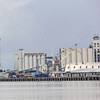IMO Training for Mariners in the Arctic Finalised
The IMO has now agreed on training requirements for seafarers navigating Arctic and Antarctic waters. The requirements are to enhance safety of navigation in polar areas and to ensure that the crew is prepared for the special conditions.
Last week, the IMO agreed on a set of new regulations for seafarers navigating Arctic and Antarctic waters.
More specifically, this means that masters and navigating officers must complete special training in order to navigate ships in ice. One of the requirements is that the seafarers must acquire an improved understanding of the limitations to the crew, ship and the equipment applicable when operating in cold and desolate areas, with poor or no infrastructure in case of, for example, accidents and pollution.
The requirements will be incorporated in the STCW Convention, which is the international set of rules regulating the overall education and training requirements for seafarers. They are expected to enter into force at the turn of the year 2018, but the countries are urged to act faster so that the regulations can become effective when the Polar Code as such enters into force in January 2017.
Requirements with several tiers
The training requirements distinguish between two training levels for the crew: a basic level and a more advanced level. In addition, masters and navigating officers of tankers and passenger ships engaged on voyages in ice are required to meet more comprehensive training requirements.
Agreement was reached about the proposal for the new set of regulations this week at the second session of the Sub-Committee on Human Element, Training and Watchkeeping (HTW). This occurred in connection with the coming internationally binding regulations on navigation in polar waters – the so-called Polar Code – and the text will now be forwarded to the Maritime Safety Committee for approval in June 2015 (MSC 95).











